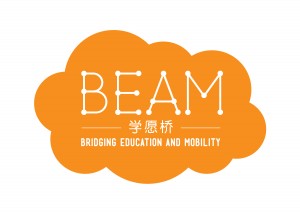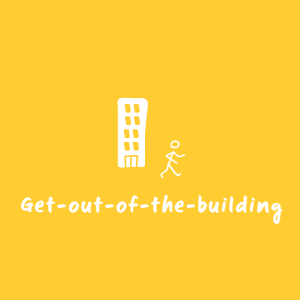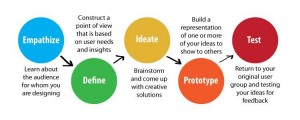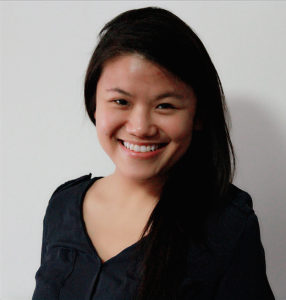The session may have finished but here is an interesting interview with an interesting Designer 🙂
Following on from our popular convergence sessions during the live Teachers as Designers* course, Keren Ruth Wong from BEAM (Bridging Education and Mobility) shares with us her learning & teaching experiences and talks about how she was introduced to Design Thinking.
This is Part One of a two part interview. Chinese translation by Nancy Li.
来自学愿桥的黄可仁与我们分享她的学习和教学经验以及有关她是如何引入到设计思维。
这是两部分访谈的第一部分。中国翻译李倩男。
1) Can you tell us a little about yourself and your teaching & learning background? 能否做一个自己介绍以及分享你的教学、学习经历吗?
I believe that my most of childhood learning experiences stemmed from a combination of my parents’ learning styles and personalities: my mother fostered my love for music and reading, and my father was a model for incredible scientific curiosity. Regardless of where we were and what I wanted to learn, my parents constantly created opportunities for me to pursue new knowledge. Some of my most vivid childhood memories involved learning about dinosaurs (of all things!) through songs and coloring books, bedtime stories and figurines. We crawled around the house like dinosaurs, and took countless museum trips to study fossils and models. This environment provided a wide set of tools to explore and ask what was ultimately most important to me.
我认为我童年时候的学习经历与父母的学习方法,结合与他们的个 性有很大的关系:我妈妈培养了我对音乐和阅读的热爱,而我爸爸对科学充满了好奇心,因此也影响了我对科学的态度。不管在什么地方,只要是我想学的东西,我 父母都会为我创造机会去学习新知识。我童年最深刻的记忆之一就是通过歌曲,绘本,睡前故事和雕像来学习恐龙(是不是很不可思议!)。我们就想恐龙一样在屋 子里爬来爬去,还去了很多次博物馆,参观恐龙化石和模型。这种环境让我有足够的空间和方式去探索、找寻那些对我来说很重要的东西。
In high school, I started teaching piano to beginners. There, I discovered the joys of witnessing a student start out with barely any understanding of hand placement, and advance to playing a simple Sonatina in a few months. Though I had spent many years learning piano, mindfully developing skills as an instructor was an extraordinary challenge.
It’s one thing to be skilled in a certain area, but to figure out how to bring out that greatness in others was a different experience.
The biggest challenge seemed to be teaching my students how to inform creative expression through a rigorous technical foundation. But again, I was grateful to have had many great role models, including my own music teachers.
高中的时候,我开始教初学者钢琴。学生们刚开始的时候对钢琴技巧几乎一无所知,但是几个月后 他们就能弹一首简单的小奏鸣曲了。也就是在那个时候,我发现,见证学生慢慢进步是一种无法言说的喜悦。然而,尽管我学了很多年的钢琴,成为一名钢琴老师却 是一个巨大的挑战。在某个领域很熟练是一回事,但能够帮助别人在一个领域发挥他们的潜力却是另一回事。最大的困难在于,如何让我的学生掌握技巧,并在此基 础上更好、更有创造性演奏音乐。不过,最让我感激的是我周围有很多包括我的音乐老师在内的榜样。
Then throughout my undergrad and grad programs, I began to study different education models and policies across the U.S. and – by the time I relocated to Beijing – across China.
然后,在美国上大学期间,我开始学习美国国内不同的教育模式和教育政策;而当我在北京读研究生的时候,我又学习了中国的教育模式和政策。
2) Can you tell us about your current work context? 能否介绍一下你现在的工作环境?
With BEAM in its early experimental stage, I primarily lead my team in sussing out our organizational model, fundraising, and hiring. My partner, Danna, drives much of our product development and channel-building in order to reach teachers. Our team is based in Beijing, but we spend a lot of time on the road with our users and other stakeholders;
One of our favorite acronyms is GOOTB: Get Out of the Building!
因为学愿桥还处于一个早期的试验阶段,所以我主要是带领我的团队来决定我们的机构模式,我同样也负责募集资金和员工的招募。我的合伙人丹娜则负责产品开发 和渠道建设,以便于我们能够和更多的老师沟通。我们的团队位于北京,但是我们大部分的时间都花在去见用户和利益相关者的路上了。所以我们最喜欢的缩略词之 一就是GOOTB:Get Out of the Building,用中文说就是:“离开办公室!”。
3) When were you introduced to Learning Design/Design Thinking? 你什么时候开始接触教学设计,或者说设计思考的呢?
In 2014, BEAM had the great privilege of participating in the first cohort of the Aha School of Social Innovation’s accelerator (WeChat: AhaSchool), co-founded by a Shanghai-based couple, Mr. Gu Yuan and Ms. Zhou Xian. That was my first meaningful exposure to Design Thinking and Lean Startup methodology. Funnily enough, it was all in Mandarin and in the context of designing rural education programming. To kick things off, we spent an intense weekend running through a translated d.school and the Running Lean curriculum. We were given a chance to practice the tools on our own case studies. And then, throughout the year, our mentors traveled with us for individual site visits/product-testing trips, checked in for progress, ran mid-term skills-based workshops and monthly content discussions for the cohort.
They patiently stood by us for crisis management, coached us for competitions, and ultimately, let us learn from simply running (and often falling) with the methodology.
2014年,学愿桥有幸成为第一批参与Aha社会创新学院的机构之一。Aha社会创新学院(微信号:AhaSchool)是由一对上海夫妇顾远老师和周 贤老师共同创立的。那是我第一次近距离地接触设计思考和精益创业方法论。有趣的是,这些都是中文,而且也全是关于设计乡村教育项目的。所以为了学习这些课 题,我们翻阅了翻译版本的斯坦福d.school和《精益创业实战》的所有课程,度过了极其紧张的一个周末。而我们也得到了在自己的案例中练习这些技巧和 工具的机会。然后,在一年的时间里,我们的导师和我们一起实地考察,测试产品,为了之后的进步而记录数据,开展中期技能研讨会,每个月还会就内容和其他人 进行讨论。他们耐心地教我们危机管理,告诉我们如何在竞争中生存,直到最后,让我们从简单的应用(及通常失败)中学会这一套方法。
However, for those who can read/understand English, I often just point them to the d.school website, which is wonderful in how they share the content in an open and easy to understand way.
然而,对那些可以用英语阅读的人来说,我通常会让他们去d.school的网站,在那个网站上,人们会以一种更公开易懂的方式分享一些内容。
Keren Ruth rallies people around the vision of BEAM, both inside and out. She co-founded BEAM while studying international development at Tsinghua University in Beijing, surveying the rural/urban education
divide. She is most inspired when leaders disrupt industry and cultural borders to solve social issues. Keren Ruth completed her undergrad at Cornell and is a member of the World Economic Forum’s Global Shapers Community.
关于黄可仁
在外筹措资源,在内凝聚人心。在清华大学学习国际发展期间,她在研究了城乡教育差距后化理论为实践,与丹娜共同创立了学愿桥。她认为,创变者会打破行业和文化的界限,来解决社会问题。她本科毕业于康奈尔大学,同时是世界经济论坛全球杰出青年。
Stay tuned for Part Two of the interview!
敬请关注面试的第二部分!
Image 1: BEAM logo (Source: www.xueyuanqiao.org)
Image 2: Get out of the building (Source: www.leanuxtools.com)
Image 3: Design Thinking (Source: www.innoweo.com)
Image 4: Keren Ruth Wong (Source: www.xueyuanqiao.org)
*Teachers as Designers relies on project-based learning and follows on from a successful Hands on ICT (Information and Communications Technology) MOOC for educators interested in developing creativity techniques and approaches to integration of educational technologies inspired by learning design.




